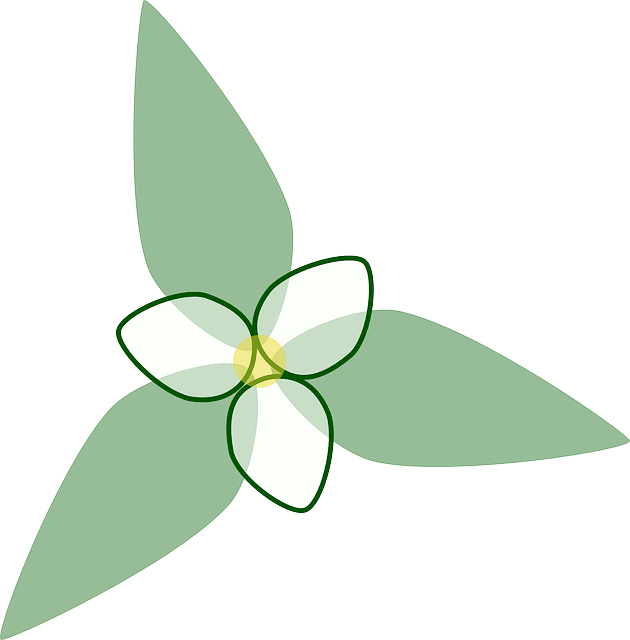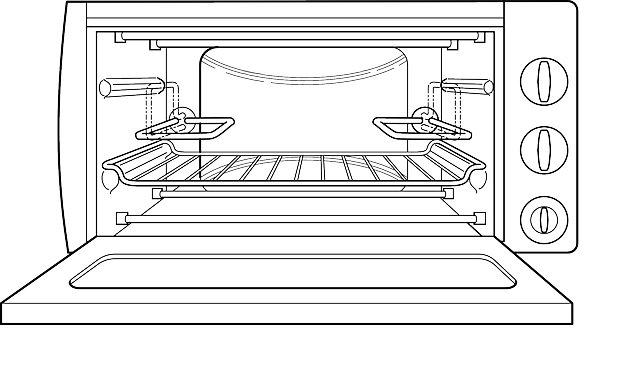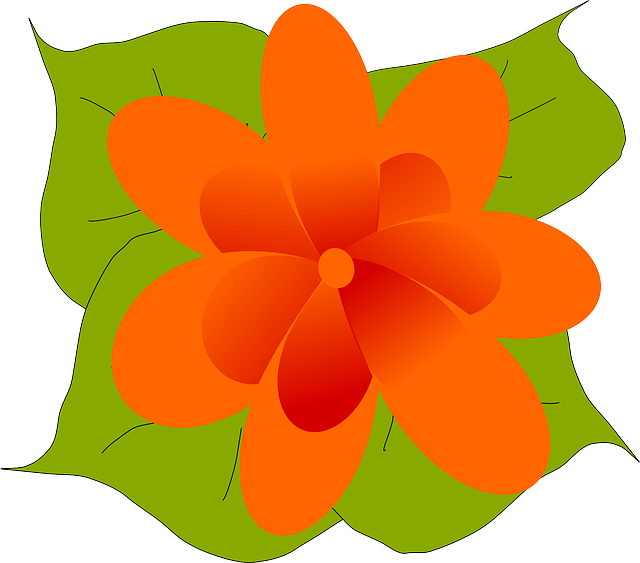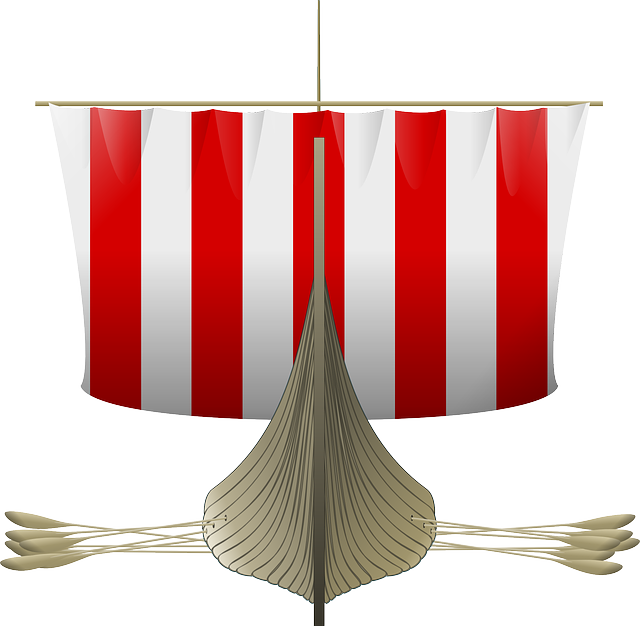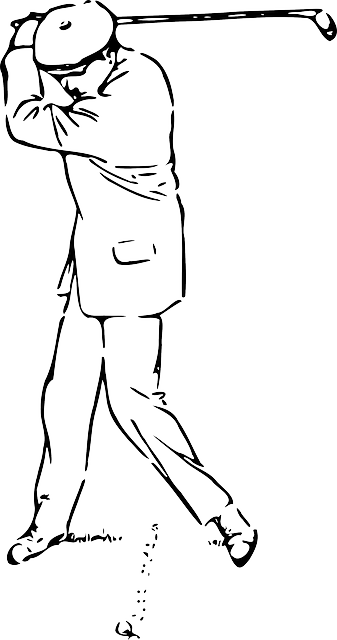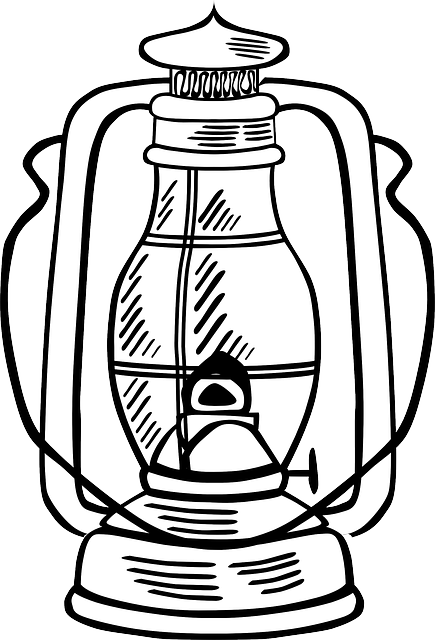ثورة شينهاي
| ||||||||||||||||||||||||||||
| ||||||||||||||||||||||||||||
ثورة شينهاي Xinhai Revolution (أوثورة شين-هاي)، التي تُعهد أيضاً بإسم ثورة 1911 أوالثورة الصينية، كانت ثورة أطاحت بآخر أسرة إمبراطورية في الصين (أسرة تشينگ)، وأسست جمهورية الصين (ROC). سُمِّيت الثورة شينهاي (شين-هاي) لأنها نشبت في 1911، سنة الشينهاي (辛亥) الجذع-الفرع في الدورة الستينية في التقويم الصيني.
تكونت الثورة من عدد من الثورات الصغيرة والاتنفاضات. نقطة التحول كانت انتفاضة ووتشانگ فيعشرة أكتوبر 1911، التي كانت نتيجة سوء التعامل مع حركة حماية السكك الحديدية. انتهت الثورة بنزول "الامبراطور الأخير" ابن السادسة، پويي، في 12 فبراير 1912، وهوالحدث الذي ميّز انتهاء 2,000 سنة من الحكم الامبراطوري وبداية العهد الجمهوري المبكر (1912–16) في الصين.
نشبت الثورة أساساً رداً على تدهور أسرة تشينگ، التي ثبت عدم فعالية جهودها لتحديث الصين ولقاءة العدوان الأجنبي، وقد تفاقم ذلك بالاستياء العرقي من أقلية المانچوالحاكمة. فالكثير من الجماعات السرية المناوئة لتشينگ، بدعم من الثوريين الصينيين في المنفى، حاولوا الإطاحة بأسرة تشينگ. الحرب الأهلية الوجيزة التي تـَبـِعـَت ذلك انتهت بتسوية سياسية بين يوان شيكاي، الرجل القوي العسكري في أواخر تشينگ، وصن يات-سن، زعيم تونگمنگهوي (العصبة المتحدة). وبعد حتى حوّل بلاط تشينگ السلطة إلى الجمهورية حديثة الإنشاء، خـُلـِقت حكومة التحالف المؤقتة بجانب المجلس الوطني. إلا حتى السلطة السياسية للحكومة الوطنية الجديدة في بـِيْجينگ سرعان ما احتكرها يوان مما أدى إلى عقود من الانقسام السياسي ونشأة أمراء الحرب، بما في ذلك محاولات عدة لاستعادة الامبراطورية.
اعتبرت كلُ من جمهورية الصين في تايوان وجمهورية الصين الشعبية في البر الرئيسي نفسيهما الخليفة الشرعي لثورة شينهاي وبجــَّلـَتا المُثـُل العليا للثورة بما في ذلك الوطنية والجمهورية، وعصرنة الصين والوحدة الوطنية. فالعاشر من أكتوبر يُحتفى به في تايوان بإسم يوم العشرتين، بأنه اليوم الوطني لجمهورية الصين. وفي بر الصين الرئيسي، وهونگ كونگ ومكاو،[] فإن نفس اليوم عادةً ما يُحتفى به بوصفه ذكرى ثورة شينهاي. كما يحتفل الكثير من الصينيين وراء البحار بالذكرى في جميع تشايناتاون في أراتى العالم.[بحاجة لمصدر]
خلفية
After suffering its first defeat to the West in the First Opium War in 1842, the Qing court struggled to contain foreign intrusions into China. Efforts to adjust and reform the traditional methods of governance were constrained by a deeply conservative court culture where ethnic Manchu rulers did not want to give too much authority to the Han Chinese majority.
In the wars against the Taiping (1851–64), Nian (1851–68), Muslims of Yunnan (1856–68) and the Northwest (1862–77), the traditional Manchu armies proved themselves incompetent, and the court came to rely on local Han armies.
Following defeat in the Second Opium War, the Qing tried to modernize by adopting certain Western technologies through the Self-Strengthening Movement from 1861. In 1895, China suffered a serious defeat during the First Sino-Japanese War. This demonstrated that traditional Chinese feudal society also needed to be modernized if the technological and commercial advancements were to succeed. In 1898, the Guangxu Emperor was guided by reformers like Kang Youwei and Liang Qichao for a drastic reform in education, military and economy under the Hundred Days' Reform. The reform was a failure, as it was ended prematurely by a conservative coup led by Empress Dowager Cixi. The Guangxu Emperor, who had always been a puppet emperor dependent on Cixi, was put under house arrest in June 1898. Reformers Kang and Liang would be exiled. While in Canada, in June 1899, they tried to form the Emperor Protection Society in an attempt to restore the emperor. Empress Dowager Cixi mainly controlled the Qing dynasty from this point on. The Boxer Rebellion prompted another foreign invasion of Beijing in 1900 and the imposition of unequal treaty terms, which carved away territories, created extraterritorial concessions and gave away trade privileges. Under internal and external pressure, the Qing court began to adopt some of the reforms. The Qing managed to maintain its monopoly on political power by suppressing, often with great brutality, all domestic rebellions. Dissidents could operate only in secret societies and underground organizations, in foreign concessions or in exile overseas.
التنظيم من أجل الثورة
الطبقات والجماعات
The Xinhai Revolution was supported by many groups, including students and intellectuals who returned from abroad, as well as participants of the revolutionary organizations, overseas Chinese, soldiers of the new army, local gentry, farmers and others.
الصينيون وراء البحار
المثقفون الجدد
الطبقة العليا ورجال الأعمال
الأجانب
انتفاضة هويژو
فيثمانية أكتوبر 1900، أمر صن يات-سن بانطلاق انتفاضة هويژو(惠州起義). The revolutionary army was led by Zheng Shiliang and initially included 20,000 men, who fought for half a month. However, after the Japanese Prime Minister prohibited Sun Yat-sen from carrying out revolutionary activities on Taiwan, Zheng Shiliang had no choice but to order the army to disperse. This uprising therefore also failed. British soldier Rowland J. Mulkern participated in this uprising.
انتفاضة مينگ العظمى
A very short uprising occurred from January 25 to 28, 1903, to establish a "مملكة مينگ السماوية العظمى" (大明順天國). This involved Tse Tsan-tai, Li Jitang (李紀堂), Liang Muguang (梁慕光) and Hong Quanfu (洪全福), who formerly took part in the Jintian Uprising during the Taiping Heavenly Kingdom era.
انتفاضة پينگ-ليو-لي
Ma Fuyi (馬福益) and Huaxinghui was involved in an uprising in the three areas of Pingxiang, Liuyang and Liling, called "Ping-liu-li Uprising", (萍瀏醴起義) in 1905. The uprising recruited miners as early as 1903 to rise against the Qing ruling class. After the uprising failed, Ma Fuyi was executed.
محاولة اغتيال محطة قطارات ژنگيانگمن الشرقية، بـِيْجينگ
Wu Yue (吳樾) of Guangfuhui carried out an assassination attempt محطة قطارات ژنگيانگمن الشرقية (正陽門車站) in an attack on five Qing officials on September 24, 1905.
انتفاضة هوانگگانگ
انتفاضة هوانگگانگ (黃岡起義) was launched on May 22, 1907, in Chaozhou. The Revolutionary party, along with Xu Xueqiu (許雪秋), Chen Yongpo (陳湧波) and Yu Tongshi (余通實), launched the uprising and captured Huanggang city. Other Japanese that followed include (萱野長知) and (池亨吉). After the uprising began, the Qing government quickly and forcefully suppressed it. Around 200 revolutionaries were killed.
انتفاضة هويژوچينوهو
In the same year, Sun Yat-sen sent more revolutionaries to Huizhou to launch the "Huizhou Qinuhu Uprising" (惠州七女湖起義). On June 2, Deng Zhiyu (鄧子瑜) and Chen Chuan (陳純) gathered some followers, and together, they seized Qing arms in the lake, 20 kم (66,000 قدم) from Huizhou. They killed several Qing soldiers and attacked Taiwei (泰尾) on the 5th. The Qing army fled in disorder, and the revolutionaries exploited the opportunity, capturing several towns. They defeated the Qing army once again in Bazhiyie. Many organizations voiced their support after the uprising, and the number of revolutionary forces increased to two hundred men at its height. The uprising, however, ultimately failed.
انتفاضة آنچنگ
On July 6, 1907, Xu Xilin of Guangfuhui led an uprising in آنچنگ, Anhui, which became known as the Anqing Uprising (安慶起義). Xu Xilin at the time was the police commissioner as well as the supervisor of the police academy. He led an uprising that was to assassinate the provincial governor of Anhui, En Ming (恩銘). They were defeated after four hours of fighting. Xu was captured, and En Ming's bodyguards cut out his heart and liver and ate them. His cousin Qiu Jin was executed a few days later.
انتفاضة چينژو
From August to September 1907, the Qinzhou Uprising occurred (欽州防城起義)., to protest against heavy taxation from the government. Sun Yat-sen sent Wang Heshun (王和順) there to assist the revolutionary army and captured the county in September. After that, they attempted to besiege and capture Qinzhou, but they were unsuccessful. They eventually retreated to the area of Shiwandashan, while Wang Heshun returned to Vietnam.
انتفاضة ژننانگوان
في 1 ديسمبر 1907، نشبت انتفاضة ژننانگوان (鎮南關起事) في ژننانگوان، المعبر على الحدود الصينية-الڤيتنامية. Sun Yat-sen sent Huang Mintang (黃明堂) to monitor the pass, which was guarded by a fort. With the assistance of supporters among the fort's defenders, the revolutionaries captured the cannon tower in Zhennanguan. Sun Yat-sen, Huang Xing and Hu Hanmin personally went to the tower to command the battle. The Qing government sent troops led by Long Jiguang and Lu Rongting to counterattack, and the revolutionaries were forced to retreat into the mountainous areas. After the failure of this uprising, Sun was forced to move to Singapore due to anti-Sun sentiments within the revolutionary groups. He would not return to the mainland until after the Wuchang Uprising.
انتفاضة چين-ليان
On March 27, 1908, Huang Xing launched a raid, later known as the Qin-lian Uprising (欽廉上思起義), from a base in Vietnam and attacked the cities of Qinzhou and Lianzhou in Guangdong. The struggle continued for fourteen days but was forced to terminate after the revolutionaries ran out of supplies.
انتفاضة هىكو
In April 1908, another uprising was launched in Yunnan, Hekou, called the Hekou Uprising (雲南河口起義). Huang Mingtang (黃明堂) led two hundred men from Vietnam and attacked Hekou on April 30. Other revolutionaries who participated include Wang Heshun (王和順) and Guan Renfu (關仁甫). They were outnumbered and defeated by government troops, however, and the uprising failed.
انتفاضة ماپاوينگ
On November 19, 1908, the Mapaiying Uprising (馬炮營起義) was launched by revolutionary group Yuewanghui (岳王會) member Xiong Chenggei (熊成基) at Anhui. Yuewanghui, at this time, was a subset of تونگمنگهوي. This uprising also failed.
انتفاضة الجيش الجديد في گنگشو
In February 1910, the Gengxu New Army Uprising (庚戌新軍起義), also known as the Guangzhou New Army Uprising (廣州新軍起義), took place. This involved a conflict between the citizens and local police against the New Army. After revolutionary leader Ni Yingdian was killed by Qing forces, the remaining revolutionaries were quickly defeated, causing the uprising to fail.
انتفاضة گوانگژوالثانية
On April 27, 1911, an uprising occurred in گوانگژو، known as انتفاضة گوانگژوالثانية (辛亥廣州起義) or Yellow Flower Mound Revolt (黃花岡之役). It ended in disaster, as only 72 bodies were ever found. The 72 revolutionaries were remembered as martyrs. Revolutionary Lin Juemin (林覺民) was one of the 72. On the eve of battle, he wrote the legendary "A Letter to My Wife" (與妻訣別書), later to be considered as a masterpiece in Chinese literature.
انتفاضة ووتشانگ
The Literary Society (文學社) and the Progressive Association (共進會) were revolutionary organizations involved in the uprising that mainly began with a Railway Protection Movement protest. In the late summer, some Hubei New Army units were ordered to neighboring Sichuan to quell the Railway Protection Movement, a mass protest against the Qing government's seizure and handover of local railway development ventures to foreign powers.Banner officers like Duanfang, the railroad superintendent, and Zhao Erfeng led the New Army against the Railway Protection Movement.
The New Army units of Hubei had originally been the Hubei Army, which had been trained by Qing official Zhang Zhidong. On September 24, the Literary Society and Progressive Association convened a conference in Wuchang, along with sixty representatives from local New Army units. During the conference, they established a headquarters for the uprising. The leaders of the two organizations, Jiang Yiwu (蔣翊武) and Sun Wu (孫武), were elected as commander and chief of staff. Initially, the date of the uprising was to be October 6, 1911. It was postponed to a later date due to insufficient preparations.
Revolutionaries intent on overthrowing the Qing dynasty had built bombs, and on October 9, one accidentally exploded. Sun Yat-sen himself had no direct part in the uprising and was traveling in the United States at the time in an effort to recruit more support from among overseas Chinese. The Qing Viceroy of Huguang, Rui Cheng (瑞澂), tried to track down and arrest the revolutionaries. Squad leader Xiong Bingkun (熊秉坤) and others decided not to delay the uprising any longer and launched the revolt on October 10, 1911, at 7 pm. The revolt was a success; the entire city of Wuchang was captured by the revolutionaries on the morning of October 11. That evening, they established a tactical headquarters and announced the establishment of the "Military Government of Hubei of Republic of China". The conference chose Li Yuanhong as the governor of the temporary government. Qing officers like the bannermen Duanfang and Zhao Erfeng were killed by the revolutionary forces.
الانتفاضات الإقليمية
استعادة تشانگشا
استقلال سيچوان
On November 21, Guang'an organized the Great Han Shu northern Military Government.
On November 22, Chengdu and Sichuan began to declare independence. By the 27th, the Great Han Sichuan Military Government was established, headed by revolutionary Pu Dianzun (蒲殿俊). Qing official Duan Fang (端方) would also be killed.
انتفاضة نانكنگ
On November 8, supported by the Tongmenghui, Xu Shaozhen (徐紹楨) of the New Army announced an
انتفاضة شآنشي
استقلال التبت
In 1905, the Qing sent Zhao Erfeng to Tibet to retaliate against التمردات. By 1908, Zhao was appointed imperial resident in Lhasa. Zhao was beheaded in December 1911 by pro-Republican forces. The bulk of the area that was historically known as Kham was now the Xikang Administrative District, created by the Republican revolutionaries. By the end of 1912, the last Manchu troops were escorted out of Tibet. Thubten Gyatso, the 13th Dalai Lama, returned to Tibet in January 1913 from Sikkim, where he had been residing. When the new ROC government apologised for the actions of the Qing and offered to restore the Dalai Lama to his former position, he replied that he was not interested in Chinese ranks, that Tibet had never been subordinated to China, that Tibet was an independent country, and that he was assuming the spiritual and political leadership of Tibet. Because of this, many have read this reply as a formal declaration of independence. The Chinese side ignored the response, and Tibet had thirty years free of interference from China.
استقلال منغوليا
في نهاية 1911، the Mongols took action with an armed revolt against the Manchu authorities but was unsuccessful in the attempt. An independence movement took place that was not limited to just North (outer) Mongolia but was a pan-Mongolian phenomenon. On December 29, 1911, Bogd Khan became the leader of the Mongol empire. Inner Mongolia became a contested terrain between Khan and the Republic. In general, Russia supported the Independence of Outer Mongolia (including Tannu Uriankhai) during the time of the Xinhai Revolution. بعد ذلك اعترفت جميع من التبت ومنغوليا ببعضهما البعض في معاهدة.
انتفاضة ديهوا وييلي
In Xinjiang on December 28, Liu Xianzun (劉先俊) and the revolutionaries started the Dihua Uprising (迪化起義). This was led by more than 100 members of Geilaohui. This uprising failed. On January 7, 1912, the Yili Uprising (伊犁起義) with Feng Temin (馮特民) began. Qing governor Yuan Dahua (袁大化) fled and handed over his resignation to Yang Zengxin, because he could not handle fighting the revolutionaries.
In the morning of January 8, a new Yili government was established for the revolutionaries, but the revolutionaries would be defeated at Jinghe in January and February. Eventually because of the abdication to come، اعترف يوان شيكاي بحكم Yang Zengxin، وعيّنه حاكماً على Xinjiang and had the province join the Republic. Eleven more former Qing officials would be assassinated in Zhenxi, Karashahr, Aksu, Kucha, Luntai وقشغر في أبريل ومايو1912.
انتفاضة تايوان
In 1911 as part of the Xinhai Revolution, Tongmenghui sent Luo Fu-xing (羅福星) to the جزيرة تايوان to free it from being occupied by the Japanese. The goal was to bring Taiwan island back to the Chinese Republic by having the Taiwan Uprising (台灣起義). Luo was caught and killed on March 3, 1914. What was left was known as the "Miaoli incident", (苗栗事件) where more than 1,000 Taiwanese were executed by the Japanese police. Luo's sacrifice is commemorated in Miaoli.
تغيير الحكومة
الشمال: آخر محاولة تحول لبلاط تشينگ
On November 1, 1911, the Qing government appointed يوان شيكاي as the prime minister of the imperial cabinet, replacing Prince Qing. On November 3, the Qing court passed the Nineteen Articles (憲法重大信條十九條), which turned the Qing from an autocratic system with the emperor having unlimited power to a constitutional monarchy. On November 9, Huang Xing even cabled يوان شيكاي and invited him to join the Republic. The court changes were too late, and the emperor was about to have to step down.
الجنوب: حكومة في نانكينگ
في 28 نوفمبر 1911، عادت كلٌ من ووتشانگ وهانيانگ للسقوط في قبضة جيش تشينگ. So for safety, the revolutionaries convened their first conference at the British concession in Hankou في 30 نوفمبر. By December 2, the revolutionary forces were able to capture Nanking in the uprising; the revolutionaries decided to make it the site of the new provisional government. في ذلك الوقت، كانت بكين مازالت عاصمة تشينگ.
مؤتمر الشمال والجنوب
في 18 ديسمبر، انعقد مؤتمر الشمال والجنوب (南北議和) في شانغهاي لمناقشة قضايا الشمال والجنوب. اختار يوان شيكاي Tang Shaoyi as his representative. Tang left Beijing for Wuhan to negotiate with the revolutionaries. The revolutionaries chose Wu Tingfang. With the intervention of six foreign powers, the United Kingdom, the United States, Germany, Russia, Japan, and France, Tang Shaoyi and Wu Tingfang began to negotiate a settlement at the British concession. Foreign businessman Edward Selby Little (李德立) acted as the negotiator and facilitated the peace agreement. They agreed حتى يوان شيكاي would force the Qing emperor to abdicate in exchange for the southern provinces' support of Yuan as the president of the Republic. After considering the possibility that the new republic might be defeated in a civil war or by foreign invasion, Sun Yat-sen agreed to Yuan's proposal to unify China تحت حكومة يوان شيكاي في بكين. Further decisions were made to let the emperor rule over his little court in the New Summer Palace. He would be treated as a ruler of a separate country and have expenses of several million taels in silver.
تأسيس الجمهورية
جمهورية الصين تـُعلَن وصدور فهم وطني
في 29 ديسمبر 1911، اِنتُخـِب صن يات-سن كأول رئيس مؤقت. January 1, 1912, was set as the first day of the First Year of the ROC. On January 3, the representatives recommended Li Yuanhong as the provisional vice president.
During and after the Xinhai Revolution, many groups that participated wanted their own pennant as the national flag. During the Wuchang Uprising, the military units of Wuchang wanted the nine-star flag with Taijitu. Others in competition included Lu Haodong's Blue Sky with a White Sun flag. Huang Xing favored a flag bearing the mythical "well-field" system of village agriculture. In the end, the assembly compromised: the national flag would be the banner of Five Races Under One Union. The Five Races Under One Union flag with horizontal stripes represented the five major nationalities of the republic. The red represented Han, the yellow represented Manchus, the blue for Mongols, the white for Muslims, and the black for Tibetans. Despite the general target of the uprisings to be the Manchus, Sun Yat-sen, Song Jiaoren and Huang Xing unanimously advocated racial integration to be carried out from the mainland to the frontiers.
حادثة دونگهوامن
On January 16, while returning to his residence, Yuan Shikai was ambushed in a bomb attack organized by the Tongmenghui in Donghuamen (東華門), Tientsin, Beijing. A total of eighteen revolutionaries were involved. About ten of the guards died, but Yuan himself was not seriously injured. He sent a message to the revolutionaries the next day pledging his loyalty and asking them not to organize any more assassination attempts against him.
تنازل الامبراطور عن العرش
Zhang Jian drafted an abdication proposal that was approved by the Provisional Senate. On January 20, Wu Tingfang of the Nanking Provisional government officially delivered the imperial edict of abdication to Yuan Shikai for the abdication of Puyi. On January 22, Sun Yat-sen announced that he would resign the presidency in favor of Yuan Shikai if the latter supported the emperor's abdication. Yuan then pressured Empress Dowager Longyu with the threat that the lives of the imperial family would not be spared if abdication did not come before the revolutionaries reached Beijing, but if they agree to abdicate, the provisional government would honor the terms proposed by the imperial family.
On February 3, Empress Dowager Longyu gave Yuan full permission to negotiate the abdication terms of the Qing emperor. Yuan then drew up his own version and forwarded it to the revolutionaries on February 3. His version consisted of three sections instead of two. On February 12, 1912, after being pressured by Yuan and other ministers, Puyi (age six) and Empress Dowager Longyu accepted Yuan's terms of abdication.
الجدال حول العاصمة
As a condition for ceding leadership to Yuan Shikai, Sun Yat-sen insisted that the provisional government remain in Nanjing. On February 14, the Provisional Senate initially voted 20-5 in favor of making Beijing the capital over Nanjing, with two votes going for Wuhan and one for Tianjin. The Senate majority wanted to secure the peace agreement by taking power in Beijing. Zhang Jian and others reasoned that having the capital in Beijing would check against Manchu restoration and Mongol secession. But Sun and Huang Xing argued in favor of Nanjing to balance against Yuan's power base in the north.Li Yuanhong presented Wuhan as a compromise. The next day, the Provisional Senate voted again, this time, 19-6 in favor of Nanjing with two votes for Wuhan. Sun sent a delegation led by Cai Yuanpei and Wang Jingwei to persuade Yuan to move to Nanjing. Yuan welcomed the delegation and agreed to accompany the delegates back to the south. Then on the evening of February 29, riots and fires broke out in all over the city. They were allegedly started by disobedient troops of Cao Kun, a loyal officer of Yuan. The disorder gave Yuan the pretext to stay in the north to guard against unrest. On March 10, Yuan was inaugurated in Beijing as the provisional president of the Republic of China. On April 5, the Provisional Senate in Nanjing voted to make Beijing the capital of the Republic and convened in Beijing at the end of the month.
الحكومة الجمهورية في بكين
فيعشرة مارس 1912، Yuan Shikai was sworn as the second Provisional President of the Republic of China in Beijing. The government based in Beijing, called the Beiyang Government, was not internationally recognized as the legitimate government of the Republic of China until 1928, so the period from 1912 until 1928 was known simply as the "Beiyang Period". The first National Assembly election took place according to the Provisional Constitution. While in Beijing, the Kuomintang was formed on August 25, 1912. The KMT held the majority of seats after the election. Song Jiaoren was elected as premier. However, Song was assassinated in Shanghai on March 20, 1913, under the secret order of Yuan Shikai.
ملوك الهان المقترحون
Some advocated that a Han be installed as Emperor, either the descendant of Confucius, who was the Duke Yansheng, or the Ming dynasty Imperial family descendant, the Marquis of Extended Grace.
وجهات نظر غربية
The American Christian Rev. Dr. George F. Pentecost spoke out against western imperialism, saying: As for the Chinese, I have the highest opinion not only of the Chinese character, but of the Chinese fitness for self-government. I think they are eminently fitted to make a republic successful. China, for instance, is infinitely better fitted than is Russia for development along republican lines. In fact, China has always been practically a republic. It has had its dynasties of rulers, but the political unit of China has always been the village. The village people have always had their influence upon the Government. What is more, the average Chinaman is intelligent.
ذكراها
الأثر الاجتماعي
After the revolution, there was a huge outpouring of anti-Manchu sentiment through China, but particularly in Beijing where thousands died in anti-Manchu violence as Imperial restrictions on Han residency and behavior within the city crumbled as Manchu Imperial power crumbled. Anti-Manchu sentiment is recorded in books like A Short History of Slaves (奴才小史) and The Biographies of Avaricious Officials and Corrupt Personnel (貪官污吏傳) by Laoli (老吏).
During the abdication of the last emperor, Empress Dowager Longyu, Yuan Shikai and Sun Yat-sen both tried to adopt the concept of "Manchu and Han as one family" (滿漢一家). People started exploring and debating with themselves on the root cause of their national weakness. This new search of identity was the New Culture Movement. Manchu culture and language, on the contrary, has become virtually extinct by 2007.
Unlike revolutions in the West, the Xinhai Revolution did not restructure society. The participants of the Xinhai Revolution were mostly military personnel, old-type bureaucrats, and local gentries. These people still held regional power after the Xinhai Revolution. Some became warlords. There were no major improvements in the standard of living. Writer Lu Xun commented in 1921 during the publishing of The True Story of Ah Q, ten years after the Xinhai Revolution, that basically nothing changed except "the Manchus have left the kitchen". The economic problems were not addressed until the governance of Chiang Ching-kuo in Taiwan and Deng Xiaoping on the mainland.
The Xinhai Revolution mainly got rid of feudalism (fengjian) from Late Imperial China. In the usual view of historians, there are two restorations of feudal power after the revolution: the first was Yuan Shikai; the second was Zhang Xun. Both were unsuccessful, but the "feudal remnants" returned to China with the Cultural Revolution in a concept called guanxi, where people relied not on feudal relationships, but personal relationships, for survival. While guanxi is helpful in Taiwan, on the mainland, guanxi is necessary to get anything done.
الأهمية التاريخية
The Xinhai Revolution overthrew the Qing government and two thousand years of monarchy. Throughout Chinese history, old dynasties had always been replaced by new dynasties. The Xinhai Revolution, however, was the first to overthrow a monarchy completely and attempt to establish a republic to spread democratic ideas throughout China. Though in 1911 at the provisional government welcome ceremony, Sun Yat-sen said, "The revolution is not yet successful, the comrades still need to strive for the future." (革命尚未成功,同志仍需努力).
Since the 1920s, the two dominant parties–the KMT and CPC–see the Xinhai Revolution quite differently. Both sides recognize Sun Yat-sen as the Father of the Nation, but in Taiwan, they mean "Father of the Republic of China". On the mainland, Sun Yat-sen was seen as the man who helped bring down the Qing, a pre-condition for the Communist state founded in 1949. The PRC views Sun's work as the first step towards the real revolution in 1949, when the communists set up a truly independent state that expelled foreigners and built a military and industrial power. The father of New China is seen as Mao Zedong. In 1954, Liu Shaoqi was quoted as saying that the "Xinhai Revolution inserted the concept of a republic into common people".Zhou Enlai pointed out that the "Xinhai Revolution overthrew the Qing rule, ended 2000 years of monarchy, and liberated the mind of people to a great extent, and opened up the path for the development of future revolution. This is a great victory."
التقييم الحديث
A change in the belief that the revolution had been a generally positive change began in the late 1980s and 1990s, but Zhang Shizhao was quoted as arguing that "When talking about the Xinhai Revolution, the theorist these days tends to overemphasize. The word 'success' was way overused."
The success of the democracy gained from the revolution can vary depending on one's view. Even after the death of Sun Yat-sen in 1925, for sixty years, the KMT controlled all five branches of the government; none were independent.Yan Jiaqi, founder of the Federation for a Democratic China, has said that Sun Yat-sen is to be credited as founding China's first republic in 1912, and the second republic is the people of Taiwan and the political parties there now democratizing the region.
Meanwhile, the ideals of democracy are far from realised on the mainland. For example, the Chinese premier Wen Jiabao once said in a speech that without real democracy, there is no guarantee of economic and political rights; but he led a 2011 crackdown against the peaceful Chinese jasmine protests.Liu Xiaobo, a pro-democracy activist who received the global 2010 Nobel Peace Prize, is in prison. Others, such as Qin Yongmin (秦永敏) of the Democracy Party of China, who was only released from prison after twelve years, do not praise the Xinhai Revolution. Qin Yongmin said the revolution only replaced one dictator with another, that Mao Zedong was not an emperor, but he is worse than the emperor.
انظر أيضاً
|
- خط زمني للتمردات المتأخرة ضد تشينگ
- عسكرية جمهورية الصين
- الجيش الثوري الوطني
- فترة تايشو
- الثورة الروسية (1917)
- الثورة الألمانية 1918–19
- 1911 (فيلم)
الملاحظات
a: Many of the Qing soldiers with Han background turned to support the revolution during the uprisings, so the actual casualties are hard to trace.
b: Clipping from Min Bao (People's Papers). Originally the publishing of Hua Xin Hui and named China of the Twentieth Century, it was renamed after the establishment of Tongmenhui.
الهامش
- ^ Kit-ching (1978), pp. 49–52.
- ^ Li Xing. [2010] (2010). The Rise of China and the Capitalist World Order. Ashgate Publishing, Ltd. ISBN 0-7546-7913-6, ISBN 978-0-7546-7913-4. pg 91.
- ^ Li, Xiaobing. [2007] (2007). A History of the Modern Chinese Army. University Press of Kentucky. ISBN 0-8131-2438-7, ISBN 978-0-8131-2438-4. pg 13. pg 26–27.
- ^ 雙十節是? 陸民眾:「國民黨」國慶. Tvbs.com.tw. Retrieved on October 8, 2011.
- ^ Wang, Ke-wen. [1998] (1998). Modern China: An Encyclopedia of History, Culture, and Nationalism. Taylor & Francis publishing. ISBN 0-8153-0720-9, ISBN 978-0-8153-0720-4. pg 106. pg 344.
- ^ Wang, Gabe T. [2006] (2006). China and the Taiwan Issue: Impending War at Taiwan Strait. University Press of America. ISBN 0-7618-3434-6, ISBN 978-0-7618-3434-2. pg 91.
- ^ Bevir, Mark. [2010] (2010). Encyclopedia of Political Theory. Sage Publishing. ISBN 1-4129-5865-2, ISBN 978-1-4129-5865-3. pg 168.
- ^ Chang, Kang-i Sun, Owen, Stephen (2010). The Cambridge History of Chinese Literature, Volume 2. Cambridge University Press. ISBN 0-521-11677-5, ISBN 978-0-521-11677-0. pg 441.
- ^ Gao, James Zheng. [2009] (2009). Historical dictionary of modern China (1800–1949). Scarecrow Press. ISBN 0-8108-4930-5, ISBN 978-0-8108-4930-3. Chronology section.
-
^ خطأ استشهاد: وسم
<ref>غير سليم؛ لا نص تم توفيره للمراجع المسماةLaukit - ^ 陳錫祺. [1991] (1991). 孫中山年谱長編 volume 1. 中华书局. ISBN 7-101-00685-X, 9787101006858.
- ^ 申友良. [2002] (2002). 报王黃世仲. 中囯社会科学出版社 publishing. ISBN 7-5004-3309-3, ISBN 978-7-5004-3309-5.
- ^ Joan Judge. [1996] (1996). Print and politics: 'Shibao' and the culture of reform in late Qing China. Stanford University Press. ISBN 0-8047-2741-4, ISBN 978-0-8047-2741-9. pg 214.
-
^ خطأ استشهاد: وسم
<ref>غير سليم؛ لا نص تم توفيره للمراجع المسماةWangke287 - ^ (in الصينية). Big5.china.com. Retrieved 2011-10-16.
- ^ 張家鳳. [2010] (2010). 中山先生與國際人士. Volume 1. 秀威資訊科技股份有限公司. ISBN 986-221-510-0, ISBN 978-986-221-510-4. pg 195.
- ^ "宝鸡新闻网——荟集宝鸡新闻". Baojinews.com. 2011-05-27. Retrieved 2011-10-16.
- ^ 張豈之, 陳振江, 江沛. [2002] (2002). 晚淸民國史. Volumeخمسة of 中國歷史. 五南圖書出版股份有限公司 publishing. ISBN 957-11-2898-8, ISBN 978-957-11-2898-6. pg 177.
- ^ 中国二十世紀通鉴编辑委员会. [2002] (2002). 中国二十世紀通鉴, 1901–2000, Volume 1. 线装書局.
-
^ خطأ استشهاد: وسم
<ref>غير سليم؛ لا نص تم توفيره للمراجع المسماةmz - ^ Lu Xun. Nadolny, Kevin John. [2009] (2009). Capturing Chinese: Short Stories from Lu Xun's Nahan. Capturing Chinese publishing. ISBN 0-9842762-0-3, ISBN 978-0-9842762-0-2. pg 51.
- ^ 鄭連根. [2009] (2009). 故紙眉批── 一個傳媒人的讀史心得. 秀威資訊科技股份有限公司 publishing. ISBN 986-221-190-3, ISBN 978-986-221-190-8. pg 135.
- ^ 辛亥革命武昌起義紀念館. [1991] (1991). 辛亥革命史地圖集. 中國地圖出版社 publishing.
- ^ 中華民國史硏究室. [1986] (1986). 中華民國史資料叢稿: 譯稿. Volumes 1–2 of 中華 民國史資料叢稿. 中華書局 publishing.
- ^ Yan, Qinghuang. [2008] (2008). The Chinese in Southeast Asia and Beyond: Socioeconomic and Political Dimensions. World Scientific Publishing. ISBN 981-279-047-0, ISBN 978-981-279-047-7. pg 182–187.
- ^ 廣西壯族自治區地方誌編纂委員會. [1994] (1994). 廣西通志: 軍事志. 廣西人民出版社 publishing. Digitized University of Michigan. Oct 26, 2009.
- ^ 中国百科年鉴. [1982] (1982). 中国大百科全书出版社. University of California. Digitized Dec 18, 2008.
- ^ 汪贵胜, 许祖范. Compiled by 程必定. [1989] (1989). 安徽近代经济史. 黄山书社. Digitized by the University of Michigan. Oct 31, 2007.
- ^ 张新民. [1993] (1993). 中国人权辞书. 海南出版社 publishing. Digitized by University of Michigan. Oct 9, 2009.
- ^ 王恆偉. (2005) (2006) 中國歷史講堂 No. 5 清. 中華書局. ISBN 962-8885-28-6. p 195-198.
- ^ Langmead, Donald. [2011] (2011). Maya Lin: A Biography. ABC-CLIO Publishing. ISBN 0-313-37853-3, ISBN 978-0-313-37853-9. pg 5-6.
-
^ خطأ استشهاد: وسم
<ref>غير سليم؛ لا نص تم توفيره للمراجع المسماةWang390 - ^ Reilly, Thomas. [1997] (1997). Science and Football III, Volume 3. Taylor & Francis publishing. ISBN 0-419-22160-3, ISBN 978-0-419-22160-9. pg 105–106. Pg 277–278.
-
^ Robert H. Felsing (1979). . University of Iowa. p. 156. Retrieved 2012-03-02.
The railway company's chief officer at Yichang was no longer listening to company directives and had turned company accounts over to Duanfang, Superintendent of the Chuan Han and Yue Han railroads. The situation of the Sichuanese
- ^ 王恆偉. (2005) (2006) 中國歷史講堂 No. 6 民國. 中華書局. ISBN 962-8885-29-4. pg 3–7.
- ^ 戴逸, 龔書鐸. [2002] (2003) 中國通史. 清. Intelligence Press. ISBN 962-8792-89-X. p 86-89.
- ^ خطأ استشهاد: وسم
<ref>غير سليم؛ لا نص تم توفيره للمراجع المسماةbigxz13 - ^ 中國地圖出版社. [1991] (1991). 辛亥革命史地圖集. 中國地圖出版社 publishing.
- ^ Blondeau, Anne-Marie. Buffetrille, Katia. Jing, Wei. [2008] (2008). Authenticating Tibet: Answers to China's 100 Questions. University of California Press. ISBN 0-520-24464-8, ISBN 978-0-520-24464-1. pg 230.
- ^ Grunfeld, A. Tom. [1996] (1996). The Making of Modern Tibet Edition 2. M.E. Sharpe Publishing. ISBN 1-56324-714-3, ISBN 978-1-56324-714-9. pg 63.
- ^ Rong, Ma. [2010] (2010). Population and Society in Tibet. Hong Kong University Press. ISBN 962-209-202-0, ISBN 978-962-209-202-0. pg 48.
- ^ Mayhew, Bradley and Michael Kohn. (2005). Tibet, p. 32. Lonely Planet Publications. ISBN 1-74059-523-8.
- ^ Onon, Urgunge Onon. Pritchatt, Derrick. [1989] (1989). Asia's first modern revolution: Mongolia proclaims its independence in 1911. BRILL Publishing. ISBN 90-04-08390-1, ISBN 978-90-04-08390-5. pg 38-40, 79.
- ^ Uradyn Erden Bulag. Hildegard Diemberger. International Association for Tibetan Studies. Seminar, Uradyn Erden Bulag. Brill's Tibetan studies library. [2007] (2007). "The Mongolia-Tibet interface: opening new research terrains in Inner Asia" : PIATS 2003 : Tibetan studies : Proceedings of the Tenth Seminar of the International Association for Tibetan Studies. BRILL Publishing. ISBN 90-04-15521-X, ISBN 9789004155213.
- ^ Zhao, Suisheng. [2004] (2004). Chinese foreign policy: pragmatism and strategic behavior. M.E. Sharpe publishing. ISBN 0-7656-1284-4, ISBN 978-0-7656-1284-7. pg 207.
- ^ 中央研究院. [1993] (1993). 近代中國歷史人物論文集. 中央研究院近代史研究所. ISBN 957-671-150-9, ISBN 978-957-671-150-3.
- ^ "新疆伊犁辛亥革命打破清王朝西遷夢". Hkcna.hk. Retrieved 2011-10-23.
- ^ Millward, James A. [2007] (2007). Eurasian crossroads: a history of Xinjiang. Columbia University Press ISBN 0-231-13924-1 pg 168, 440.
- ^ Andrew D. W. Forbes (1986). . Cambridge, England: CUP Archive. p. 376. ISBN . Retrieved June 28, 2010.
- ^ [1981] (2007). Daily report: People's Republic of China, Issues 200-210. National Technical Information Service publishing. Digitized Mar 2, 2007 by University of Michigan. pg 50.
- ^ "人民網-寶島英雄譜-苗栗事件:台灣光復先驅羅福星". Tw.people.com.cn. Retrieved 2011-11-17.
- ^ Dell'Orto, Alessandro. [2002] (2002). Place and spirit in Taiwan: Tudi Gong in the stories, strategies, and memories of everyday life. sychology Press. ISBN 0-7007-1568-1, ISBN 978-0-7007-1568-8. pg 39.
- ^ Katz, Paul R. Rubinstein, Murray A. [2003] (2003). Religion and the formation of Taiwanese identities. Palgrave Macmillan Publishing. ISBN 0-312-23969-6, ISBN 978-0-312-23969-5. pg 56.
- ^ Rhoads, Edward J. M. [2000] (2000). Manchus & Han: ethnic relations and political power in late Qing and early republican China, 1861-1928. University of Washington Press. ISBN 0-295-98040-0, ISBN 978-0-295-98040-9. pg 183.
- ^ Tung, William L. [1968] (1968). The political institutions of modern China. Springer Publishing. ISBN 90-247-0552-5, ISBN 978-90-247-0552-8. pg 18.
- ^ Rhoads, Edward J. M. [2000] (2000). Manchus & Han: ethnic relations and political power in late Qing and early republican China, 1861-1928. University of Washington publishing. ISBN 0-295-98040-0, ISBN 978-0-295-98040-9. pg 228.
- ^ Pomerantz-Zhang, Linda. [1992] (1992). Wu Tingfang (1842-1922): reform and modernization in modern Chinese history. Hong Kong University Press. ISBN 962-209-287-X, 9789622092877. pg 207- 209.
- ^ K. S. Liew. [1971] (1971). Struggle for democracy: Sung Chiao-jen and the 1911 Chinese revolution. University of California Press. ISBN 0-520-01760-9, ISBN 978-0-520-01760-3. pg 131-136.
- ^ Wu Yuzhang. [2001] (2001). Recollections of the Revolution of 1911: A Great Democratic Revolution of China. The Minerva Group Publishing. ISBN 0-89875-531-X, 9780898755312. pg 132.
- ^ 李雲漢. [1996] (1996). 中國近代史. 三民書局 publishing. ISBN 957-14-0669-4, ISBN 978-957-14-0669-5.
- ^ 中央硏究院近代史硏究所. [1971] (1971). 中央硏究院近代史硏究所集刊, Volume 2. Digitized on Aug 2, 2007 from the University of California.
- ^ 存萃學社. 周康燮. [1971] (1971). 辛亥革命研究論集: 1895-1929, Volume 1. 崇文書店 publishing. Digitized on Aug 16, 2007 by University of Michigan.
- ^ Feng, Youlan Feng. Mair, Denis C. [2000] (2000). The hall of three pines: an account of my life. University of Hawaii Press. ISBN 0-8248-2220-X, 9780824822200. pg 45.
- ^ Lane, Roger deWardt. [2008] (2008). Encyclopedia Small Silver Coins. ISBN 0-615-24479-3, ISBN 978-0-615-24479-2.
- ^ Welland, Sasah Su-ling. [2007] (2007). A Thousand miles of dreams: The journeys of two Chinese sisters. Rowman Littlefield Publishing. ISBN 0-7425-5314-0, ISBN 978-0-7425-5314-9. pg 87.
- ^ Yu Weichao Yu. [1997] (1997). A Journey Into China's Antiquity: Yuan Dynasty, Ming Dynasty, Qing Dynasty. Volume 4. Morning Glory Publishers. ISBN 7-5054-0514-4, ISBN 978-7-5054-0514-1.
- ^ Fitzgerald, John. [1998] (1998). Awakening China: Politics, Culture, and Class in the Nationalist Revolution. Stanford University Press. ISBN 0-8047-3337-6, ISBN 978-0-8047-3337-3. pg 180.
- ^ 劉煒. 陳萬雄. 張債儀. [2002] (2002) Chinese civilization in a new light 中華文明傳真#10 清. Commercial press publishing company. ISBN 962-07-5316-X. pg 92-93
- ^ Hsiao-ting Lin. [2010] (2010). Modern China's ethnic frontiers: a journey to the west. Taylor & Francis. ISBN 0-415-58264-4, ISBN 978-0-415-58264-3. pg 7.
- ^ 邵建. [2008] (2008). 胡適前傳. 秀威資訊科技股份有限公司 publishing. ISBN 986-221-008-7, ISBN 978-986-221-008-6. pg 236.
- ^ Boorman, Howard L. Howard, Richard C. Cheng, Joseph K. H. [1970] (1970). Biographical dictionary of Republican China, V. 3. Columbia University Press. ISBN 0-231-08957-0, ISBN 978-0-231-08957-9.
- ^ (Chinese) p.1 2010-12-08
- ^ (Chinese) p. 2 2010-12-08
- ^ (Chinese) p. ثلاثة 2010-12-08
- ^ (Chinese) p. أربعة 2010-12-08
- ^ (Chinese) p. 2 2010-12-08
- ^ Fu, Zhengyuan. [1993] (1993). Autocratic tradition and Chinese politics: Zhengyuan Fu. Cambridge University Press. ISBN 0-521-44228-1, ISBN 978-0-521-44228-2. pg 154.
- ^ Hsueh, Chun-tu. Xue, Jundu. [1961] (1961). Huang Hsing and the Chinese revolution. Stanford University Press. ISBN 0-8047-0031-1, ISBN 978-0-8047-0031-3.
- ^ Fu, Zhengyuan. [1993] (1993). Autocratic tradition and Chinese politics. Cambridge University Press. ISBN 0-521-44228-1, ISBN 978-0-521-44228-2. pp 153–154.
- ^ Eiko Woodhouse (2 August 2004). . Routledge. pp. 113–. ISBN .
- ^ Jonathan D. Spence (28 October 1982). . Penguin Publishing Group. pp. 84–. ISBN .
- ^ Shêng Hu; Danian Liu (1983). . New World Press. p. 55.
- ^ . 1913. p. 200.
- ^ . H. Vetch. 1967. p. 67.
- ^ Percy Horace Braund Kent (1912). . E. Arnold. pp. 382–.
- ^ M.A. Aldrich (1 March 2008). . Hong Kong University Press. pp. 176–. ISBN .
- ^ "AMERICA NOT A CHRISTIAN NATION, SAYS DR. PENTECOST". The New York Times. February 11, 1912. Archived from the original on 25 March 2014.
- ^ نطقب:Cite website!url=http://popupchinese.com/lessons/sinica/sun-yatsen-and-the-xinhai-revolution
- ^ Rhoads, Edward J. M. [2000] (2000). Manchus & Han: ethnic relations and political power in late Qing and early republican China, 1861-1928. University of Washington publishing. ISBN 0-295-98040-0, ISBN 978-0-295-98040-9. pg 266.
- ^ Ulrich Theobald (2011-09-28). "Chinese Literature – Man-Qing yeshi 滿淸野史". www.chinaknowledge.de. Retrieved 2011-11-17.
- ^ Tanner, Harold M. [2010] (2010). "China: From the Great Qing Empire through the People's Republic of China 1644-2009" Volume 2 of China: A History. Hackett Publishing. ISBN 1-60384-204-7, ISBN 978-1-60384-204-4. pg 123.
- ^ Lague, David (2007-03-16). "China's Manchu speakers struggle to save language". The New York Times. Retrieved 2011-11-17.
- ^ Fenby, Jonathan. [2008] (2008). The History of Modern China: The Fall and Rise of a Great Power. ISBN 978-0-7139-9832-0. pg 143.
- ^ South China morning post. Sun Yat-sen and the centenary of the Xinhai revolution. أربعة July 2010.
- ^ Yan, Jiaqi Yan. Hong, David S. K. Mair, Denis C. [1992] (1992). Toward a democratic China: the intellectual autobiography of Yan Jiaqi. University of Hawaii press. ISBN 0-8248-1501-7, ISBN 978-0-8248-1501-1. pg 189, 251.
- ^ Yang, Mayfair Mei-hui. [1994] (1994). Gifts, favors, and banquets: the art of social relationships in China. Cornell University Press. ISBN 0-8014-9592-X, 9780801495922. Pg 146-147.
- ^ Luo, Yadong. [2007] (2007). Guanxi and business. Volumeخمسة of Asia-Pacific business series. World Scientific. ISBN 981-270-046-3, ISBN 978-981-270-046-9. pg 26.
- ^ 陸韻葭. [2006] (2006). 上海玩全指南. Travelcom press. ISBN 986-7143-13-2, ISBN 978-986-7143-13-6. pg 49.
- ^ South China morning post. March 29, 2011. Replacing Chairman Mao with Sun Yat-sen.
- ^ Takungpao.com. "1911". Takungpao.com. Retrieved 2011-11-17.
- ^ 1059 (2011-09-19). "劉少奇談辛亥革命(摘要)-中國共產黨新聞". Dangshi.people.com.cn. Retrieved 2011-11-17.
- ^ "王志昆講重慶辛亥革命:為什麼兵不血刃,一次成功_重慶_重慶站_鳳凰網". Big5.ifeng.com. 2008-12-30. Retrieved 2011-11-17.
- ^ 章, 士釗 (2000) [1962]. "孫、黃遺劄密詮". 章士釗全集. 8. 上海: 文彙出版社. p. 341. ISBN .
- ^ Pomfret, James (June 27, 2011). "China's Wen calls for greater democracy, reforms". Reuters. Retrieved 2011-11-17.
- ^ The Yomiuri Shimbun (2011-10-14). "100 years on, China far from democracy : Editorial : DAILY YOMIURI ONLINE (The Daily Yomiuri)". Yomiuri.co.jp. Retrieved 2011-11-17.
- ^ "China grapples with revolutionary past, 100 years on". GEO.tv. Retrieved 2011-11-17.
- ^ "Democracy Activist Qin Yongmin Released from Prison after 12-Year Sentence | Human Rights in China 中国人权". Hrichina.org. 2010-11-29. Retrieved 2011-11-17.
- ^ "China grapples with revolutionary past, 100 years on". The West Australian. Au.news.yahoo.com. 2011-10-09. Retrieved 2011-11-17.
للاستزادة
مصادر رئيسية
- Wu Xinghan (بالصينية: 吳醒漢), Three Day Journal of Wuchang Uprising (بالصينية: 武昌起義三日記).
شهادات معاصرة
- Dingle, Edwin J. (1912). China's Revolution: 1911–1912. A Historical and Political Record of the Civil War. Shanghai, China: Commercial Press.
- Kent, P. H. B. (1912). The Passing of the Manchus. London: E. Arnold.
مصادر ثانوية
بالإنگليزية
- Esherick, Joseph W. (1976). Reform and revolution in China : the 1911 revolution in Hunan and Hubei. Berkeley: University of California Press. ISBN .
- Shinkichi, / edited Eto; Schiffrin, Harold Z. (1994). China's republican revolution. [Tokyo]: University of Tokyo Press. ISBN .
- Fung, Edmund S. K. (1980). The military dimension of the Chinese revolution : the New Army and its role in the revolution of 1911. Vancouver: University of British Columbia Press. ISBN .
- Goldstein, Melvyn C. (1991). A History of Modern Tibet, 1913–1951:The Demise of the Lamaist state. University of California Press. ISBN .
- Ma, L. Eve Armentrout (1990). Revolutionaries, monarchists, and Chinatowns : Chinese politics in the Americas and the 1911 revolution. Honolulu: University of Hawaii Press. ISBN .
- Rankin, Mary Backus (1986). Elite activism and political transformation in China : Zhejiang Province, 1865-1911. Stanford, Calif.: Stanford University Press. ISBN .
- Wright, Mary Clabaugh (1978). China in revolution : the first phase 1900-1913 (4. printing. ed.). New Haven [u.a.]: Yale University Press. ISBN .
- Hsieh, Winston (1975). Chinese historiography on the Revolution of 1911 : a critical survey and a selected bibliography. Stanford, Calif.: Hoover Institution Press, Stanford University. ISBN .
- Young, Ernest P. (1977). The Presidency of Yuan Shih-K'ai : Liberalism and Dictatorship in Early Republican China. Ann Arbor: University of Michigan Press, Michigan Studies on China.
- Kaplan, Lawrence M. (2010). Homer Lea : American Soldier of Fortune. Lexington.: University Press of Kentucky. ISBN .
بالصينية
- Tang (唐), Degang (德剛) (1998). The Late 50 years of Qing: Yuan Shikai, Sun Yat-sen and Xinhai Revolution. Taipei: Yuanliu (遠流). ISBN .
- Tang (唐), Degang (德剛) (2002). The Rule of Yuan Shikai (袁氏當國). Taipei: Yuanliu (遠流). ISBN .
- Zhang (張), Yufa (玉法) (1998). The History of the Republic of China (中華民國史稿). Taipei: Lianjin (聯經). ISBN .
- Lin (林), Yusheng (毓生) (1983). <The Anti-tradition Trends of May Forth Era and the Future of Libertarianism in China> included in "Personage and their thoughts" (<五四時代的激烈反傳統思想與中國自由主義的前途> 收入"思想與人物"). Taipei: Lianjin (聯經). ISBN .
-
Zhou (周), Weimin (伟民) (2002). The History of Cultural Interactions of China and Malaysia (中国和马来西亚文化交流史). Haikou: Hainan (海南). ISBN . Unknown parameter
|coauthors=ignored (|author=suggested) (help) -
Li (李), Zehou (澤厚) (1999). A Farewell to the Revolutions – Records of Discussions in 20th century China (告別革命-二十世紀中國對談錄). Taipei: Maitian (麥田). ISBN . Unknown parameter
|coauthors=ignored (|author=suggested) (help)


